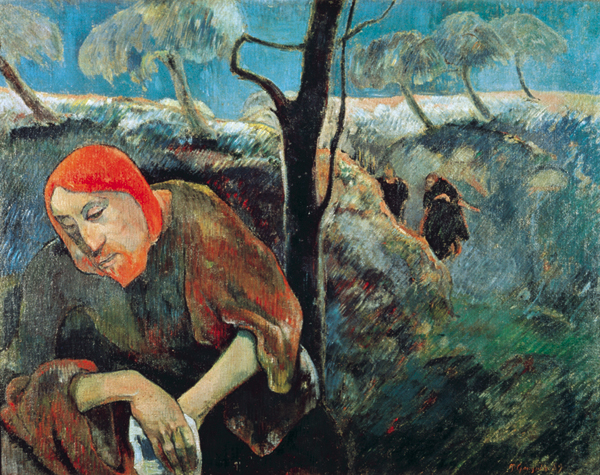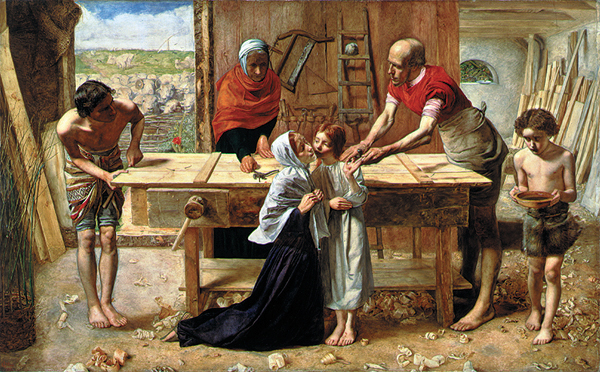

Here’s a bit of incomplete research I’m hoping our readers can help us with.
In the April issue we printed a marvelous painting by Paul Gauguin of a very human Jesus, disconsolate and abandoned at Gethsemane, to illustrate Jerome Murphy-O’Connor’s fascinating dissection of the Agony in the Garden narratives in the Gospels. In this painting (see painting of Jesus with red hair), Jesus has bright red hair and a red beard. It is a daring touch that creates a wonderful visual effect. But is that why the artist did it? I wondered.
I had another theory: The bright red hair and beard was telling us something else. The artist was telling us that Jesus was a descendant of King David, as the genealogies in Matthew (1:1–17) and Luke (3:31) state. David, too, had red hair!
But did he? David’s looks are described in 1 Samuel 16:12: There is no question that he was handsome and had a fine appearance. The text says so. In some translations this is taken to mean that he had beautiful eyes. But he also had another characteristic: He was admoni.1 You will recognize the root adam here, which means blood. Admoni is most often translated as “ruddy.” Sometimes it is “ruddy cheeks” (New Jerusalem Bible, New English Bible). The New Jewish Publication Society translation gives us “ruddy-cheeked,” but then adds a footnote stating that the meaning of the Hebrew is “uncertain.” The New Oxford Annotated Bible tells us that this word is “sometimes taken to mean that David was red-haired.”
In the traditional Jewish translation known as the Soncino Bible, the word is translated “ruddy,” but a comment tells us that this is “describing [David’s] red hair and fair skin, [which] being so exceptional in the Orient, were regarded as a special mark of beauty.”
Could Gauguin have had this in mind when he painted Jesus with red hair and a red beard? We asked Murphy-O’Connor, who replied, “Hershel may be right” and pointed us to two French translations2 that rendered the Hebrew admoni as roux, which my French dictionary tells me means “red, red-haired…”
Many questions remain. We can’t find the sources, probably Jewish midrash, that say David had red hair. Are there paintings of David with red hair? Are there other paintings of Jesus with red hair? We found one by the Pre-Raphaelite English painter John Everett Millais (1829–1896) that shows Jesus as a young boy of about eight at home with Mary and Joseph (see painting of Jesus as a young boy). An analysis of this painting tells us that “the family of Christ is represented as an unidealized working-class group.”3 Our own art expert, managing editor Molly Dewsnap, tells us that lower class people in English paintings at this time often were painted with red hair, so this is irrelevant to our problem.
Jerome Murphy-O’Connor suggests it would help if we knew where Gauguin went to school and what Bibles were available to him there. There are undoubtedly still other avenues to pursue.
We invite our readers to help us with the red-hair problem.
MLA Citation
Endnotes
Avrohom Davis, ed., The Metsudah Chumash/Rashi, vol. 4, BaMidbar (Book of Numbers) (Hoboken, NJ: Ktav, 1996), p. 144.
See Joseph M. Baumgarten et al., Qumran Cave 4, XIII: The Damascus Document (4Q266-273), Discoveries in the Judaean Desert 18 (Oxford: Clarendon Press, 1996), p. 76, pl. 14.

